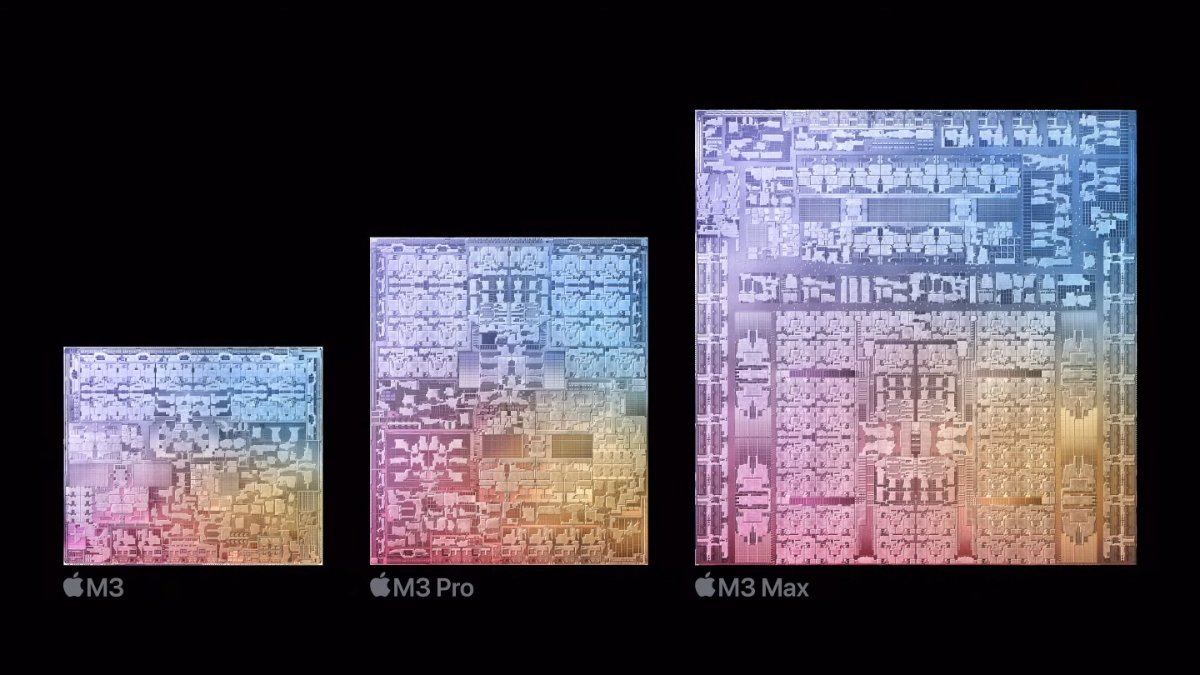First M3 benchmarks show big speed improvements over M2
At its event on Monday evening, Apple unveiled the M3, M3 Pro, and M3 Max chips, and recent benchmark tests have provided data to support Apple's claims for speed.

Apple revealed the next generation of Mac processors
Apple revealed the new M3 chip series at its "Scary fast" event on Monday, which was centered around the Mac. Before the initial orders reach customers next week, preliminary benchmark results will offer further insights into the M3 processor's performance.
Apple states that the entry-level M3 chip has an 8-core CPU that performs up to 35% quicker than the M1 and 20% faster than the M2. Additionally, its 10-core GPU is as much as 65% speedier compared to the M1 and about 20% faster than the M2.
New figures in the Geekbench database corroborate what Apple has asserted. For example, a Mac with an Apple M3 processor shows a score of 3,030 for single-core performance and a multi-core score of 11,694.
The data shows that the M3's performance metrics are notably higher than its predecessors. Specifically, a listing for an M1 iMac shows scores of 2,334 and 8.317 in single-core and multi-core performance, respectively.
Additionally, a Mac mini with a CPU of eight cores scored 2,631 and 9,742 in core performance.
While benchmark scores may not always accurately reflect performance in everyday use, they do offer a valuable means of verifying some of Apple's statements regarding performance improvements.
Read on AppleInsider


Comments
If you delve into the TMSC public documentation on their timelines, we see it is far more complicated than the headline figures suggest. The current "3nM" process as advertised by Apple for both their A17 series and M3 series is merely a stepping stone from the previous "5nM" process, which also is not what its name says. There are probably two more generations of SOCs, As and Ms, before we actually arrive at something that can truly be called 3nM. By then, the talk will be about "2nM".
I am happy with my M1 MBA 16GB/2TB until at least the M5 comes along.
As for waiting for a particular process tech, that doesn't make much sense. The continual steady onward march of process tech ended over a decade ago, and now transitions happen with more fits and starts. They are enormously expensive, and bring diminishing returns or additional problems. Predicting what is going happen next year is difficult enough, further projections are worthless at this point.
Your M1-based Mac ought to do you well for years. When it makes sense to upgrade should depend on when it stops doing what you need, or when Apple starts shipping a machine which has a new capability that you need. This has very little to do with the process technologies being used to create it.
Editor: it would be nice if you created an actual chart that showed the Geekbench scores all together. Finding them in the article is a mess.
iPhone 15 / 15 Pro both got more memory at no extra cost. Not so with Mac. And the Apple Tax is now at +300% for a memory upgrade.
For once, I predicted correctly. I usually tell my friends, watch and see when I buy a computer, because that's always the wrong time to buy a new computer.
Are you building machine learning models? Making movies in 8K? Building high resolution 3D models? Then did you consider that perhaps you don't actually need to buy a MacBook Pro? The word "Pro" is unfortunately just a status symbol for a lot of people who don't truly understand what it means.
And let's not forget the benefits of the M-series chips for performance-per-watt... but I guess that's just another weird Apple obsession. LOL
To me what matters is: what does it enable me to do what I couldn’t do before?
That answer on a generation A to generation B basis usually leads to: not much.
On a multi-generational skip that starts to answer that question: a much better battery life, exponentially faster video editing and exporting.
Even then there’s the question of when you really go ‘pedal to the metal’ and you find out these are usually short sprints.
At this stage the baseline CPU usually delivers the best cost to performance ratio.